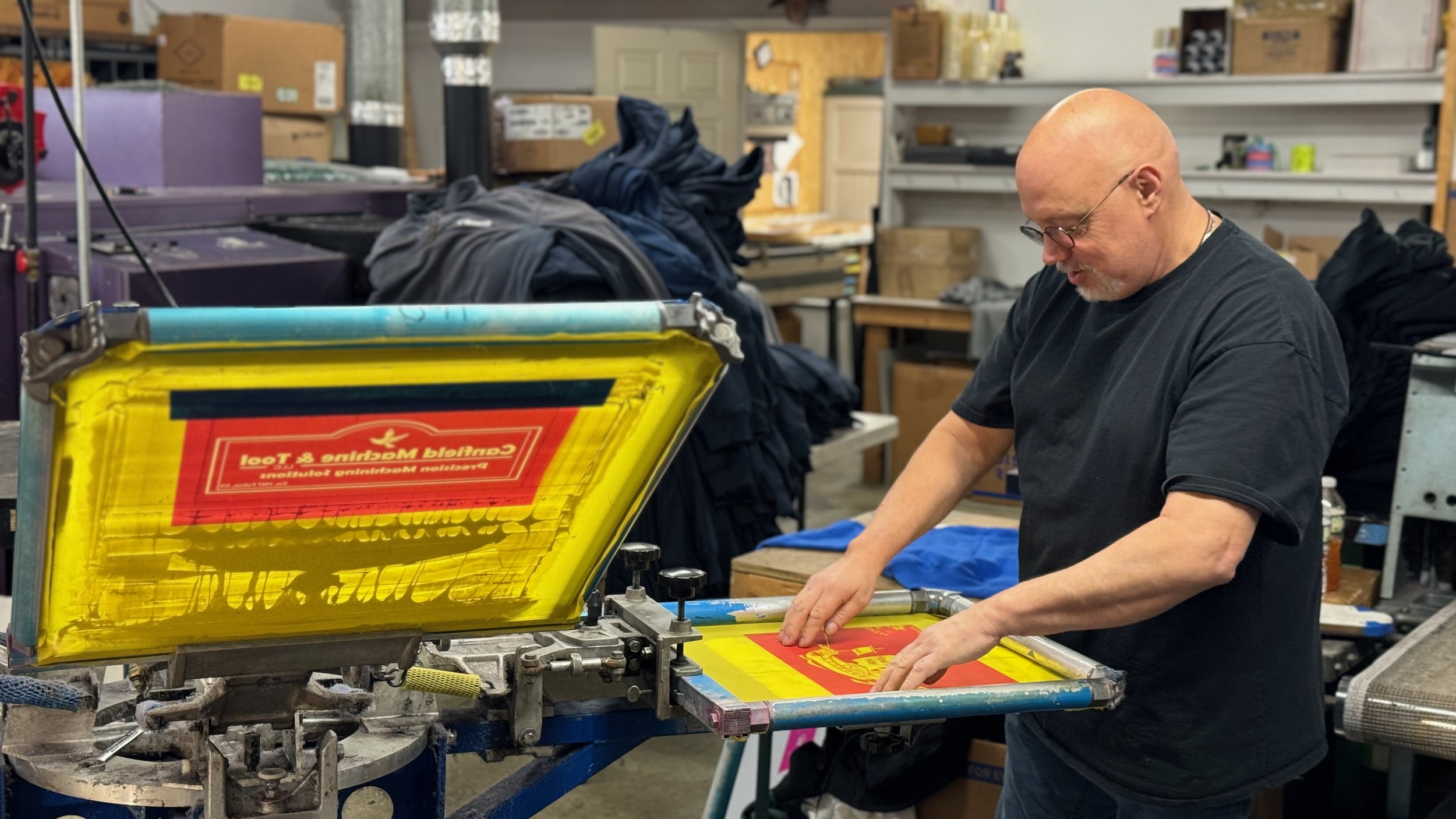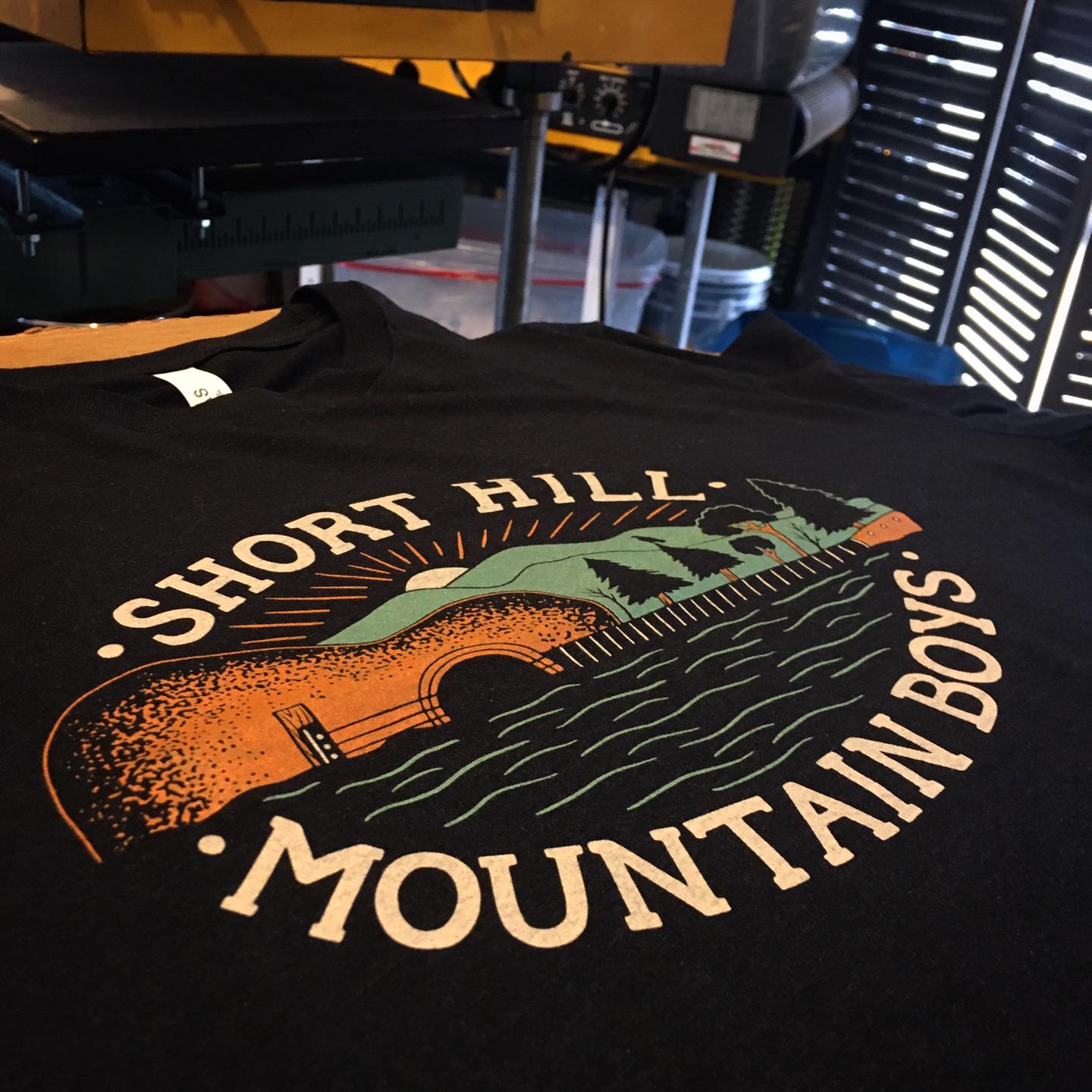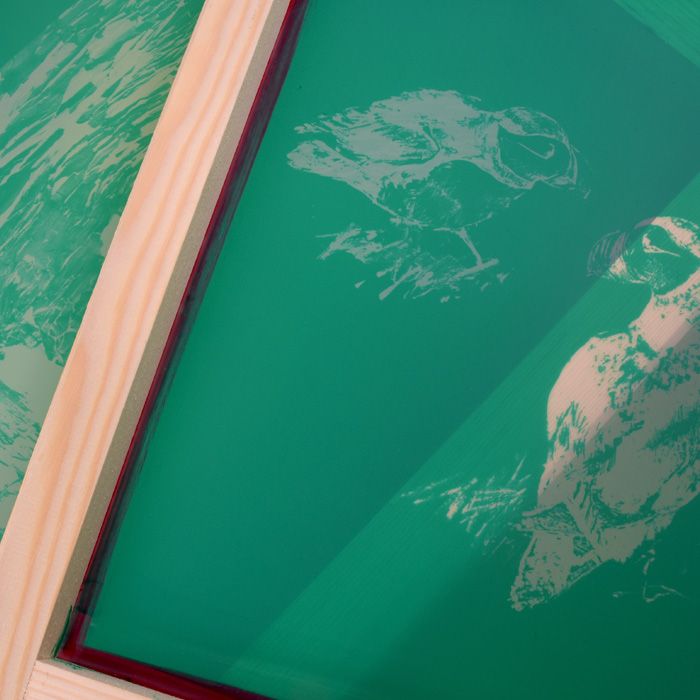Beginner-Friendly Screen Printing Kit for DIY Projects
Beginner-Friendly Screen Printing Kit for DIY Projects
Blog Article
Display Printing Uncovered: Everything You Need to Know Regarding T-Shirt and Garment Printing Techniques
Screen printing is a fascinating approach that combines art with technique, offering unlimited possibilities for creativity. Prepared to check out the crucial components that make display printing an art kind?
The Fundamentals of Display Printing: Just How It Functions
When you dive right into display printing, you'll find it's both an art and a science. At its core, screen printing involves producing a stencil, or display, that enables ink to pass with just in certain locations.
Next, you'll blend your inks and prepare your printing surface area. Position the screen over the textile, after that use a squeegee to press ink with the display onto the garment. This procedure needs precision, as you want clear, dynamic prints. After printing, you'll cure the ink with heat, guaranteeing it abides by the textile and lasts with laundries. Each action is necessary, and grasping them will elevate your screen printing skills, transforming basic garments into one-of-a-kind, expressive pieces.
Kinds Of Screen Printing Methods
As soon as you realize the essentials of display printing, it's time to discover the different strategies that can boost your layouts. One popular technique is standard display printing, where ink is pushed through a stenciled screen. This method is excellent for vibrant, dynamic shades. There's water-based ink printing, which offers a softer feeling and is environment-friendly, yet it requires a various technique to curing.
If you're going for great details, consider discharge printing. This technique gets rid of dye from the textile, leaving a soft, vintage appearance. One more alternative is plastisol printing, understood for its longevity and vibrant colors, making it a favored for lots of brands. Lastly, try out halftone printing to produce gradient results and detailed layouts. Each technique has its unique charm, so do not wait to try them out to discover what fits your design best!
Essential Tools for Display Printing
To accomplish sensational lead to screen printing, having the ideal devices is essential. You'll need a tough display printing framework, which holds the mesh that transfers your design onto the garment. Next off, buy top notch mops; these are necessary for applying ink evenly across the display. You'll also need a great exposure device to create your displays, along with a washout booth for cleaning them after use. A dependable warm source, like a conveyor clothes dryer or warm press, is crucial for treating your prints to assure longevity. Don't forget a proper work space, geared up with tables and storage for your materials. Safety equipment, such as masks and gloves, will certainly keep you risk-free from chemicals and inks. With the right tools, you'll be well on your way to producing professional-quality prints.
Selecting the Right Inks and Products
When choosing inks and materials for display printing, you require to take into consideration the kind of ink that functions best for your project. Think about textile compatibility to ensure your designs look terrific and last long. Check out environment-friendly ink alternatives to make your printing procedure a lot more sustainable.
Kinds Of Display Inks
Picking the appropriate display ink is essential for accomplishing vibrant, durable prints that satisfy your project's demands. There are a number of kinds of display inks to take a look at. Specialty inks, such as metal or glow-in-the-dark, can include unique results to your designs.

Textile Compatibility Considerations
Comprehending textile compatibility is crucial for accomplishing premium screen prints, especially given that different products respond distinctively to various inks. Always check your inks on example textile to assure they adhere properly and preserve shade stability. Additionally, maintain in mind that fabric weight and appearance can affect the last end result, so selecting the appropriate ink and product combination is important for your job's success.
Eco-Friendly Ink Options
Environmentally friendly inks are becoming a prominent selection for screen printers who intend to lessen their environmental influence while maintaining high quality. When choosing inks, consider water-based inks, which are less dangerous and simpler to cleanse up contrasted to typical solvents. These inks bond well with materials, delivering dynamic results without toxic chemicals. You might likewise discover eco-solvent inks that use less volatile natural substances (VOCs), making them a much safer alternative for both your health and the earth.
In addition, look for inks made from sustainable resources, such as soy or vegetable-based options. By picking the appropriate inks and products, you'll not just create spectacular layouts however also add to an extra lasting printing procedure. Make the button, and your prints will show your commitment to the atmosphere!
Preparing Your Style for Display Printing

Submit Format Needs
To assure your layout looks lively and sharp on fabric, you'll need to pay site close attention to submit layout requirements for display printing. Beginning with vector data like AI or EPS, as they can be scaled without shedding quality. If you make use of raster images, opt for high-resolution data, such as TIFF or PNG, preferably at 300 DPI. Prevent using JPEGs, as they can shed clarity when resized. Likewise, make sure your design has a transparent history to stop undesirable white edges on your prints. Lastly, keep shade modes in mind; CMYK is standard for screen printing, so convert your RGB develops accordingly. By following these standards, you'll set your artwork up for an effective print.
Color Splitting Up Methods
Color separation is an important step in preparing your design for display printing, and understanding it can greatly enhance your print top quality. You'll require to break your style right into individual colors, as each shade needs a separate display during printing. Start by determining all the colors in your style and create layers each. You can utilize software application like Adobe Photoshop or Illustrator to separate and different colors successfully. Be particular to save each layer as a separate data, commonly in a format like TIFF or PSD. This accuracy not only ensures precise shade representation however also enhances the printing procedure. By taking notice of color separation, you'll attain lively and professional outcomes in your screen-printed garments.
Resolution and Size
Achieving the very best results in display printing starts with ensuring your style has the right resolution and size. Ideally, your art work should be at the very least 300 DPI (dots per inch) for sharp, clear prints. If you utilize reduced resolution, your final item might look pixelated and amateur.
When it comes to size, consider the measurements of your print area. Design your artwork to match the final see print dimension, preferably producing it in the real dimensions you'll be printing. This means, you'll avoid any unexpected scaling issues.
Constantly check your style in both vector and raster formats. Vector graphics can be scaled without losing high quality, making them suitable for screen printing. Preparing appropriately will guarantee your layout looks fantastic on every garment!
Step-by-Step Display Printing Process
Display printing is a dynamic process that enables you to develop vibrant layouts on various surface areas. To get begun, you'll need a display, emulsion, and your chosen ink.
Put ink onto the screen and use a squeegee to push the ink with the pattern onto the material. Raise the screen carefully and let the print dry. You have actually successfully screen published your style.
Tips for Successful Screen Printing Projects
While you're diving right into your screen printing jobs, remember that prep work is vital to success. Begin by gathering all your products-- inks, screens, squeegees, and garments. A tidy office assists prevent unwanted mistakes, so clean up before you start.
Next, validate your art work is high-resolution and correctly sized for your garment. Evaluate your display for correct direct exposure and tidy it extensively to stay clear have a peek here of smudges. When mixing your inks, follow the maker's standards to accomplish the right uniformity.
During printing, use even stress with your squeegee for regular results. Don't rush; take your time to verify each print satisfies your requirements. After printing, let your garments dry entirely before dealing with or packaging them.
Last but not least, constantly maintain an example of your help future reference. This means, you can assess your progression and enhance your techniques over time. Satisfied printing!

Regularly Asked Inquiries
How much time Does It Require To Establish a Screen Printing Work?
Establishing a display printing work usually takes about half an hour to an hour. You'll prepare the screens, mix inks, and change the press. The moment differs based upon intricacy and experience, so remain arranged!
Can I Print on Various Textile Keys In Using the Same Method?
Yes, you can print on various material kinds using the exact same strategy, yet you'll need to readjust your settings and inks. Some fabrics soak up ink in different ways, so exploring warranties the finest outcomes for every product.
What Are Common Blunders to Prevent in Display Printing?
When screen printing, stay clear of common blunders like making use of the incorrect ink, ignoring correct exposure times, or avoiding pre-press checks. Always evaluate your arrangement and maintain clean screens to assure top quality results each time.
Exactly How Can I Properly Tidy and Maintain My Display Printing Tools?
To properly tidy and keep your display printing devices, you ought to routinely wash displays with proper solvents, check squeegees for wear, and assure all tools are kept dry and dust-free. Uniformity enhances and protects against costly repairs efficiency.
Is Screen Printing Eco-friendly Compared to Other Methods?
Screen printing can be a lot more eco-friendly than various other techniques, especially if you utilize water-based inks and eco-conscious materials. By choosing lasting materials and methods, you reduce waste and lessen your influence on the planet.
Display Printing Uncovered: Every Little Thing You Need to Know Concerning Tee and Garment Printing Methods
At its core, display printing involves developing a pattern, or screen, that allows ink to pass via just in details areas. Setting the screen over the material, then utilize a squeegee to press ink through the display onto the garment. One popular method is standard display printing, where ink is pushed via a stenciled screen.When picking inks and materials for screen printing, you need to take into account the type of ink that works ideal for your project.
Report this page